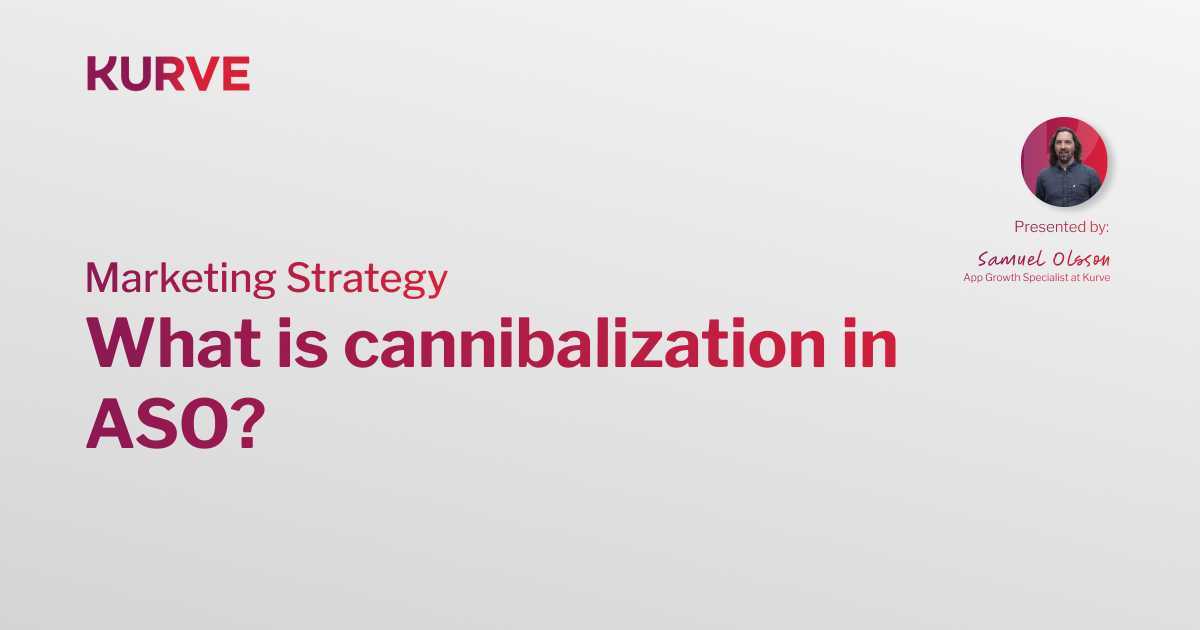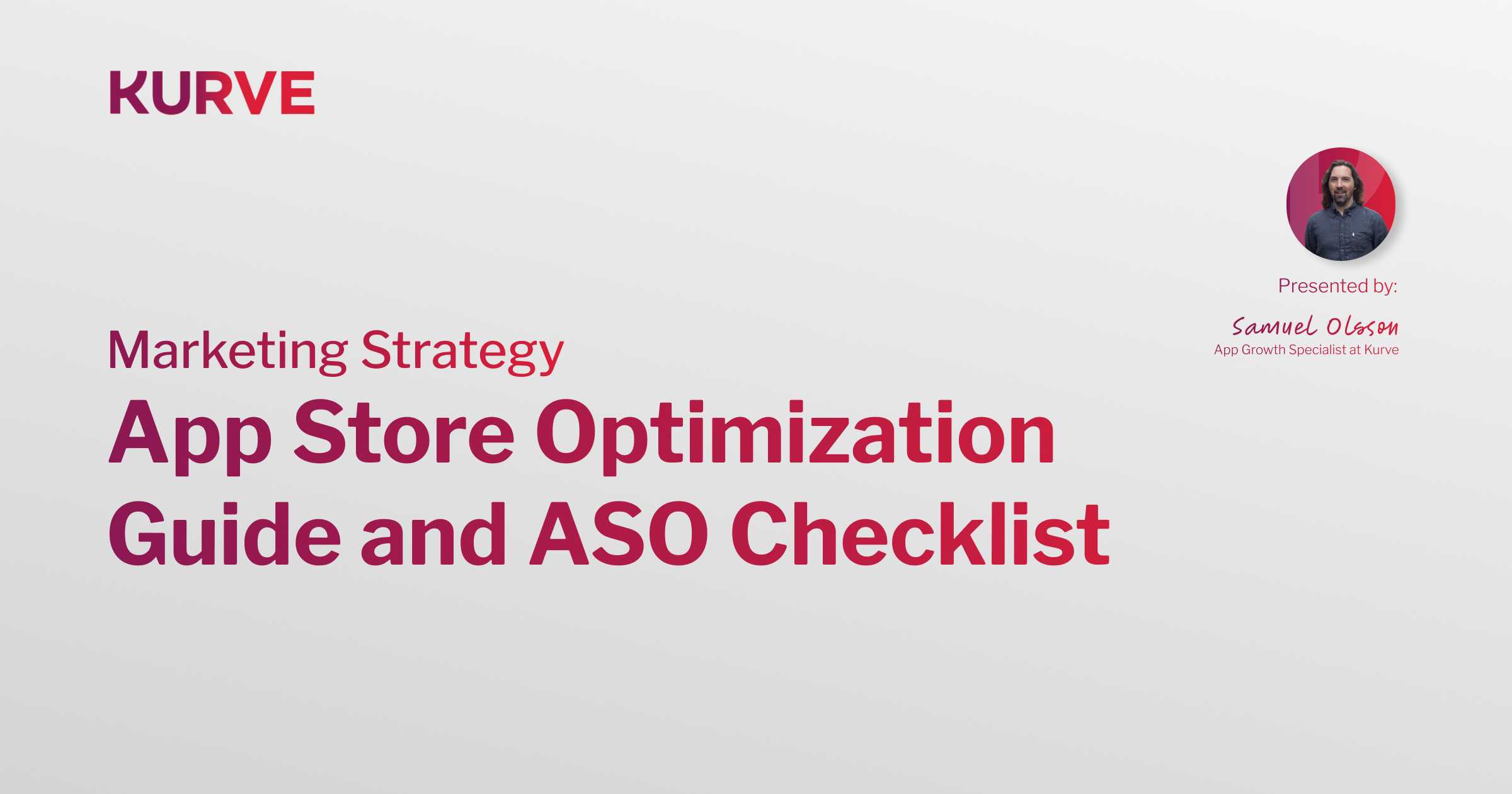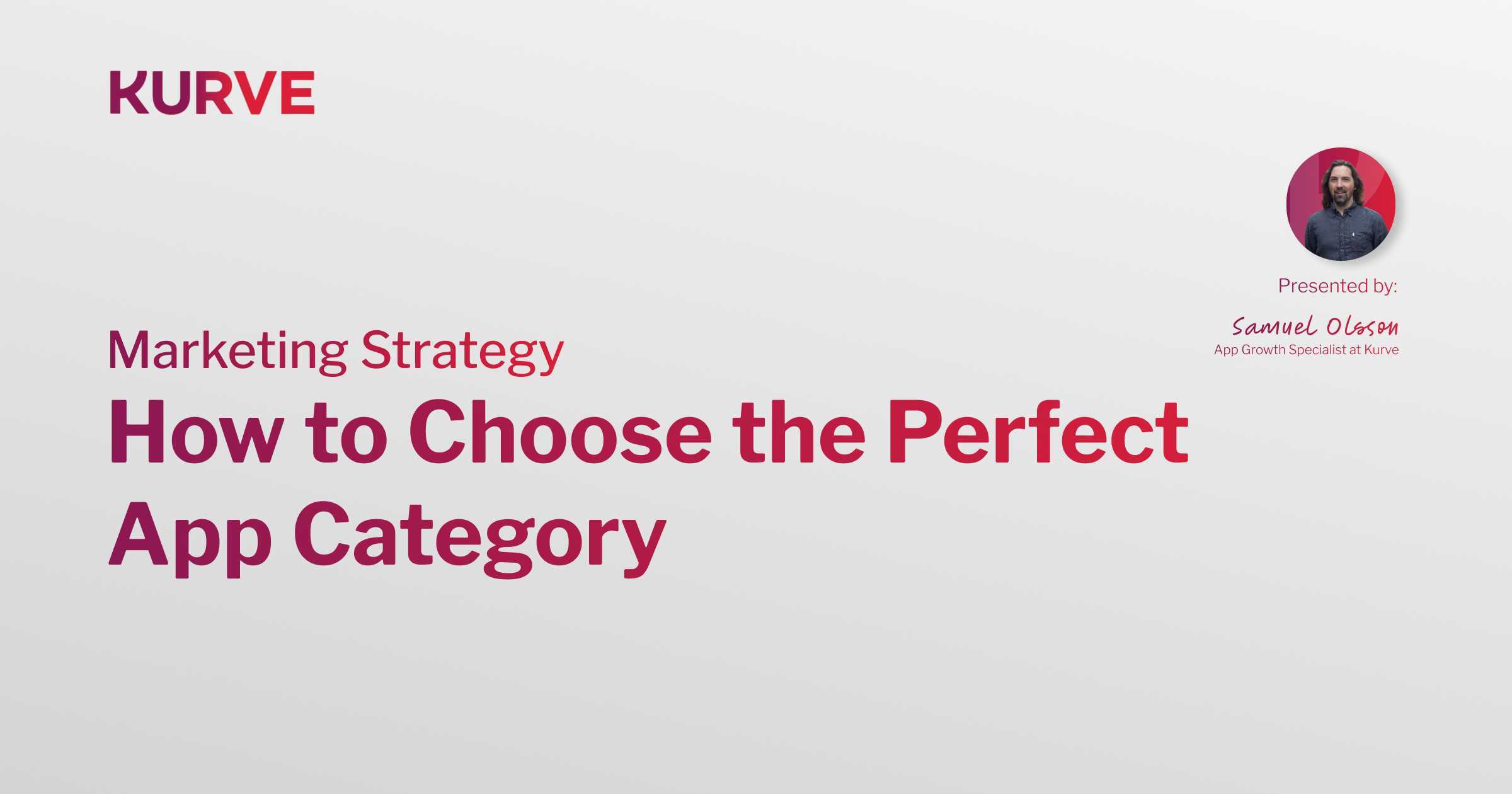15 Essential Elements to Gamify with Gen Z
With attention spans getting shorter and the variety of choices increasing, capturing attention is harder than ever.
That's where gamification comes in. It's the art of making ordinary activities fun, and it has impacted how businesses and app developers connect with their audiences, especially Gen Z. These younger consumers, students, and emerging professionals have grown up with screens at their fingertips and expect engagement and reward.
Gamification, when done right, is the perfect tool to deliver that.
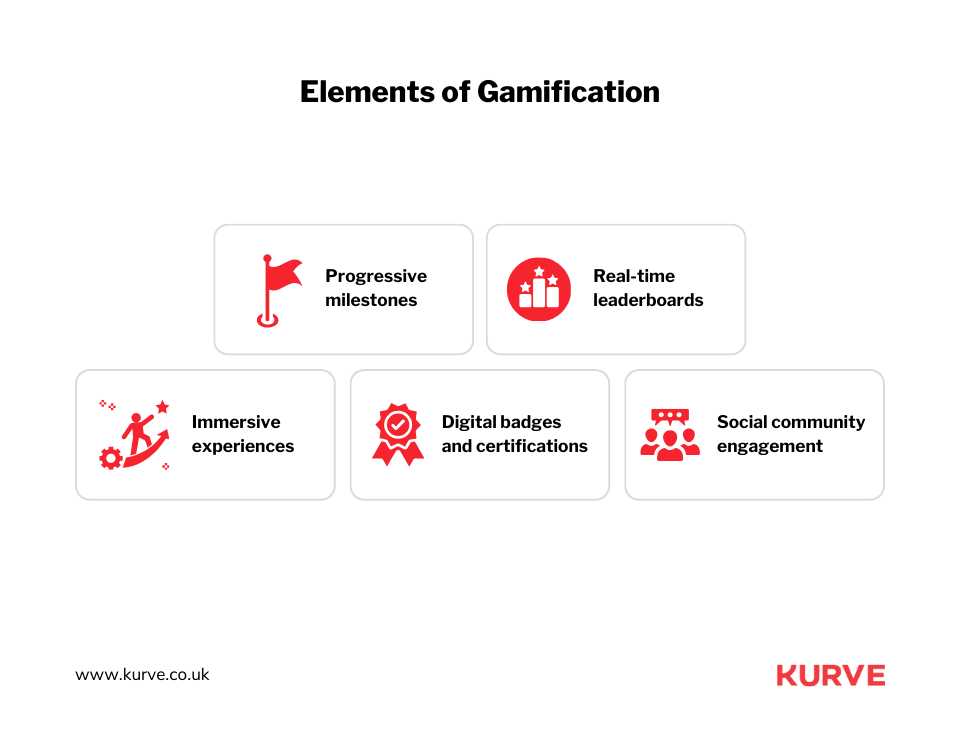
| Table of Contents |
| How Does Gamification Work? Top 15 Gamification Elements Gamification for Gen Z Effective Gamification Examples The Future of Gamification with Kurve |
How Does Gamification Work?
How gamification works is rooted in how our brains are wired. Let's first break down the psychology behind it.
Gamification taps into two types of motivation;
- Extrinsic Motivation: Rewards like points, badges, and levels provide tangible incentives.
- Intrinsic Motivation: Rewards like mastery, progress, and social connection make activities enjoyable.
Our brains crave dopamine, a neurotransmitter tied to pleasure. Gamification delivers it through a "reward loop." We perform actions, get rewarded, release dopamine, and become hooked on repeating the process – this drives repeated engagement.
Gamification is now a norm in a lot of things. You will notice it in:
- Apps and Websites: Points for purchases, progress bars for completing profiles, and social leaderboards. Examples are stores that offer loyalty programs where you earn points with purchases. These points unlock discounts, free items, or early access to sales or products.
- Learning Platforms: Quizzes turned into games, badges for skill mastery, and learning journeys designed as levels. Duolingo, a language learning app, allows you to earn experience points to level up, maintain daily streaks and compete with friends on leaderboards.
- Marketing Campaigns: Contests, interactive challenges, and loyalty programs with rewards for engagement. Examples are brands that run social media contests where participants submit original content (photos, videos) for a chance to win prizes.
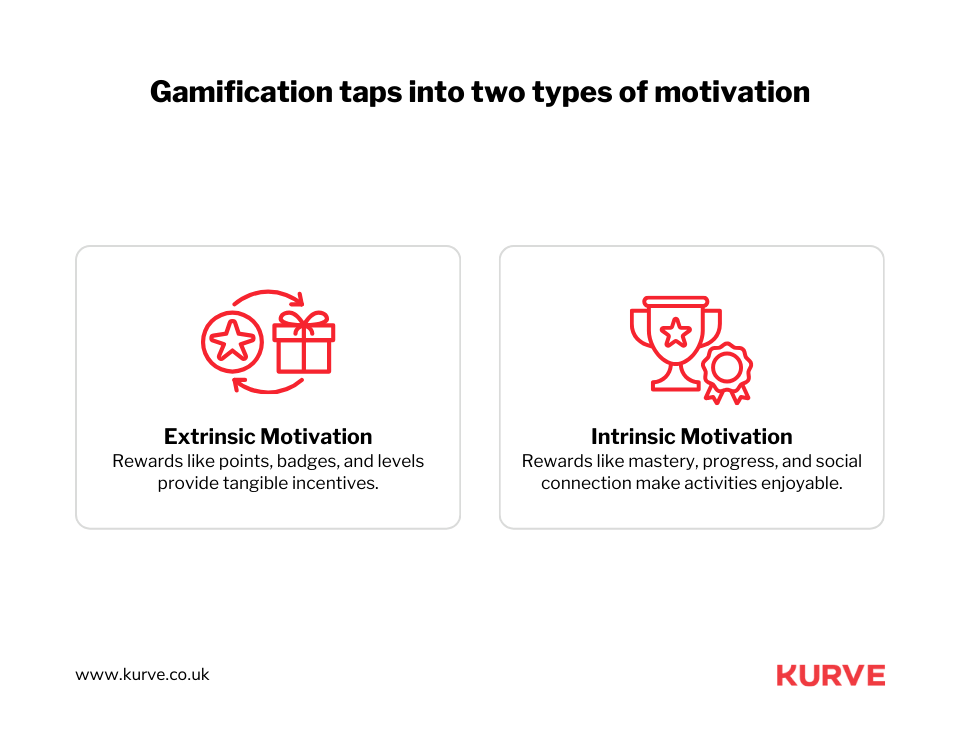
Top 15 Gamification Elements
To unlock the potential of gamification, you need to master its building blocks. With the right elements, gamification captures attention, influences behavior, and keeps your Gen Z audience returning for more.
Here are the elements of gamification you need to know.
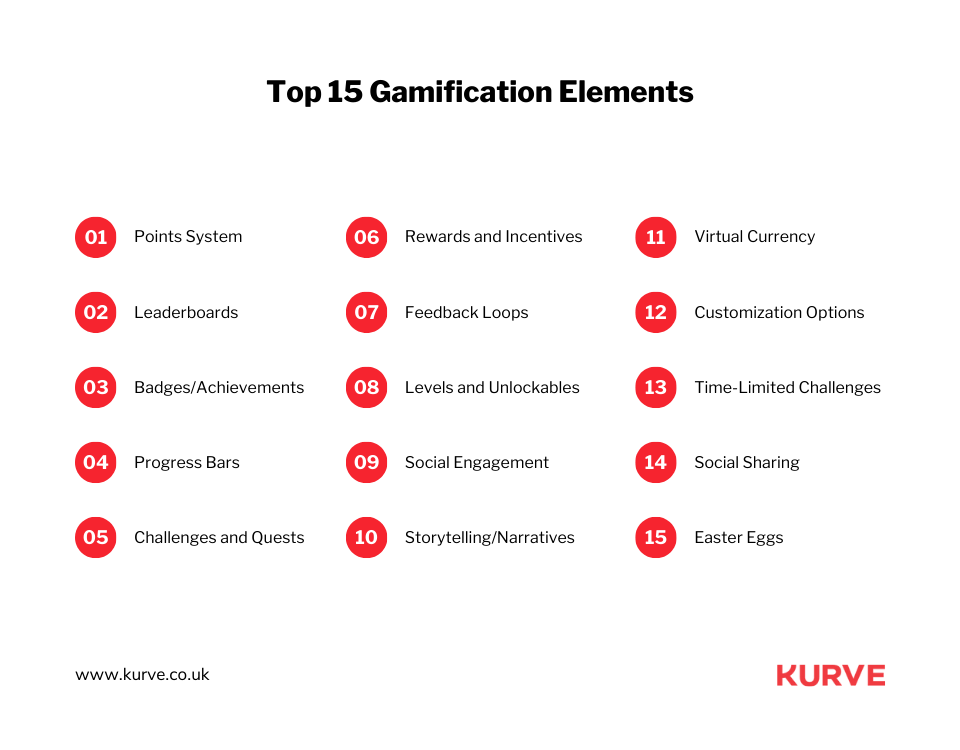
1. Points System
Points are the most fundamental currency of gamification. They represent progress, achievement, and value within a gamified system. Users accumulate points by completing actions, through purchases, contributing content, or mastering a new skill.
It works to provide a numerical measure of a user's progress, offering instant gratification. Points act as a tangible reward, motivating engagement. They can be exchanged for virtual or real-world rewards.
Some examples include.
- Loyalty Programs: Customers earn points with every purchase, which can be redeemed for discounts, free items, or VIP perks.
- Learning Platforms: Correct answers in quizzes, completed assignments, and active participation can earn learners points.
2. Leaderboards
Leaderboards are visual rankings that display the top performers within a gamified experience, like a video game. They rank users based on points, levels, or other quantifiable metrics.
Leaderboards tap into our innate desire to compete and strive for the top spot. Moreover, appearing on a leaderboard offers public validation and status, rewarding users for their achievements.
Some examples include,
- Fitness Apps: Leaderboards in apps like Strava track weekly distances or challenge participation among friends.
- Online Games: Massive multiplayer games often feature extensive leaderboards for various metrics (kills, wins, playtime, etc.).
3. Badges/Achievements
Badges and achievements are virtual rewards for users completing specific tasks or milestones. Unlike points, they represent specific accomplishments and act as visual status symbols.
They act as milestones, demonstrating a user's journey and progress. Earning a badge provides a sense of accomplishment and encourages further user engagement. Some badges might be rare or difficult to obtain, adding an extra layer of prestige and desirability.
Some examples include,
- Online Learning Platforms: Badges that motivate students to complete courses, master skill sets, or engage in the platform.
- Community Forums: Badges recognizing helpful contributors, long-term members, or experts in specific topics.
4. Progress Bars
Progress bars are game mechanics that indicate how many points a user is to complete a task or reach a goal. They usually take the form of a bar that fills up as progress is made.
Progress bars transform goals into tangible progress, making the journey feel more achievable. It's also known that seeing a partially filled progress bar creates a subtle urge to finish it. Progress bars constantly update, providing micro-rewards and a sense of accomplishment as users progress.
Some examples include,
- Profile Completion: Websites often use progress bars to encourage users to complete their entire profile.
- Fundraising Campaigns: Progress bars display how much closer a campaign is to its fundraising target, encouraging donations.
5. Challenges and Quests
Challenges are short-term, focused tasks with specific goals and rewards upon completion. They provide a quick burst of engagement and accomplishment. Quests are longer-term, multi-step journeys leading to a reward or outcome. Quests with a story element create a feeling of mission and progression towards a greater purpose.
Challenges and quests allow users to test skills, learn from failure, and improve with each attempt.
Some examples include,
- Fitness Apps: Weekly challenges to hit step goals or "quest" style programs with progressive exercise routines.
- Education: A "quest" to complete a project, each phase represented by smaller challenges focused on research, presentation development, etc.
6. Rewards and Incentives
Rewards and incentives are tangible or intangible benefits users receive for completing actions, challenges, or reaching milestones within a gamified experience. They are the primary motivation that encourages users to participate or continue engaging.
Rewards tap into the dopamine-driven satisfaction cycle as other gamification elements. The pleasure of the reward reinforces the desired behavior. Using a mix of predictable and unpredictable rewards keeps users hooked, as the element of surprise is particularly stimulating.
Some examples include,
- Tangible Rewards: Discounts, free products, exclusive content, and physical items (e.g., badges for scouts).
- Intangible Rewards: Personalized experiences, early access to features, social recognition, and elevated status in the gamified environment.
7. Feedback Loops
Feedback loops give users ongoing information about their actions and progress. They provide immediate guidance, reinforcement, or course correction.
There are two types of feedback loops: positive and negative feedback loops. Positive feedback reinforces desirable behaviors (e.g., points, congratulatory messages, leveling up). Negative feedback provides corrective guidance to help users avoid repeating mistakes or optimize their approach (e.g., "hints" or decreasing scores for incorrect answers)
Some examples include,
- Progress Bars: Visualize progress toward a goal, offering ongoing feedback.
- In-Game Tutorials: Help players understand mechanics, providing guidance and positive feedback as skills are grasped.
8. Levels and Unlockables
Levels represent stages of progression within a gamified experience. Users advance through levels by earning experience points or completing challenges.
Levels offer a structured sense of progression, showing users how to advance and giving them tangible goals to pursue. Advancing through levels signifies increasing competence, skill, or dedication, boosting the user's self-efficacy. Unlockables incentivize continued engagement with the promise of new experiences and elevated status.
Some examples include,
- Language Learning Apps: Duolingo's level system keeps users returning, unlocking new skill sets and quirky rewards as they progress.
- Video Games: Players strive to level up their characters, unlocking powerful abilities, new areas to explore, and unique cosmetic items.
9. Social Engagement
Social engagement encompasses features that encourage interaction, collaboration, or competition among users. This could be through leaderboards, teams, or social interaction.
Shared experiences and friendly competition foster a sense of belonging and connection within the gamified environment. Seeing others' progress can spark healthy competition and a desire to improve (leaderboards). Teaming up or collaborating on challenges creates accountability and offers a support system.
Some examples include,
- Fitness Challenges: Apps like Strava allow friends to see each other's workout logs and offer encouragement.
- Crowdsourced Learning: Platforms like Duolingo sometimes use community-driven translations to improve content, building a sense of contribution.
10. Storytelling/Narratives
Storytelling involves weaving a narrative into the experience. This overarching storyline may drive the experience or smaller stories tied to challenges and rewards.
Stories create an emotional connection with users, making the experience more meaningful and memorable. They provide a "why" behind the tasks and goals, making them feel less arbitrary and more purposeful.
Some examples include,
- Adventure-Themed Fitness Apps: Apps like Zombies, Run! transform exercise into a story-driven mission where users must outrun zombies.
- Educational Games: Game design elements with historical settings and character-driven challenges teach facts and concepts in an engaging way.
11. Virtual Currency
Virtual currency is an in-game or in-app currency that holds value only within the specific gamified system. Users earn this currency through actions, challenges, and achievements. It's separate from real-world money.
Virtual currency gives users a tangible representation of their progress and dedication, enhancing their connection to the experience. It can be exchanged for in-game items, exclusive content, premium features, or even real-world rewards in some cases. This creates a sense of autonomy and drives continued participation.
Tips for implementation:
- Balance the supply of your currency to maintain its perceived value. Too much available makes it feel less rewarding.
- Ensure that users can spend their currency on things like exclusive content or customization options.
- Offer diverse ways to earn currency to engage users of different skill levels and play styles.
12. Customization Options
Customization options allow users to personalize their experience within a gamified environment. This could include avatars, profile design and playstyle choices.
It boosts engagement by allowing users to project their personalities and interests, making the experience feel more "theirs." When users work on personalization, they feel a deeper connection to the gamified system. Some customization items can be earned through gameplay, turning them into symbols of achievement.
Tips for implementation:
- Avoid superficial customization. Options should impact gameplay or how users present themselves.
- Tie customization options to rewards or progression, creating a sense of aspiration.
- Ensure customization doesn't create unfair advantages that harm the sense of competition.
13. Time-Limited Challenges
Time-limited challenges are tasks, quests, or events within a gamified system that are only available for a set period. They often offer unique rewards or bonuses.
The ticking clock creates a sense of FOMO, encouraging immediate action and participation. Limited-time events break up routines and offer exclusive rewards, spiking engagement.
These challenges can spark collaboration or friendly competition among users as they race to complete them in time.
Tips for implementation:
- Make the duration and time-dependent rewards of challenges clear.
- The tasks should be difficult enough to be satisfying but not so impossible that most users fail.
- Offer a mix of short-term and longer-term challenges to maintain a sense of anticipation.
14. Social Sharing
Social sharing features allow users to broadcast their achievements, progress, and favorite moments from a gamified experience to their social media networks.
Sharing accomplishments offers instant social gratification, reinforcing the "reward loop". Compelling visuals or shareable achievements can "go viral", leading to an influx of interest.
Effective social sharing features design are shareable elements that are visually interesting or exciting. Sharing should be a one-click process from within the gamified experience. Rewarding users for sharing (with points, etc.) can kickstart engagement.
Some examples include:
- Share Leaderboard Position: A dedicated "share" button next to a user's leaderboard ranking.
- Badges on Social: Unlockable badges that look visually engaging when posted to a user's profile.
15. Easter Eggs
Easter eggs are hidden surprises, references, or mini-games tucked into a larger gamified experience.
Discovering Easter eggs fosters a sense of eliteness and a shared connection among those "in the know." Effective easter eggs fit the tone of the experience, like inside jokes or references relevant to the audience.
Some examples include,
- Pop Culture References: A hidden visual nod to a beloved movie within a learning app can lighten the mood.
- Secret Levels/Challenges: Unlocked through a complex series of player actions while playing games
Gamification for Gen Z
Gen Z is becoming a driving force in consumer and education markets. Understanding their unique traits is key to successful engagement strategies. This generation stands apart from its predecessors through several characteristics.
Authenticity and Transparency
Gen Z is adept at sniffing out content that feels inauthentic or manipulative. Because of this, they crave honesty and transparency from brands and organizations they interact with.
Here's how gamification can embrace these values:
- Be upfront about how challenges work, what outcomes are possible, and if there are elements involving chance.
- Inflated promises or rewards that are almost unattainable will backfire and erode trust.
- Don't gamify to extract data or push excessive microtransactions. Use appropriate gamification elements that offer genuine value and a sense of fair play.
- Allows Gen Z users to submit creative ideas. This fosters buy-in and demonstrates genuine care for their feedback.
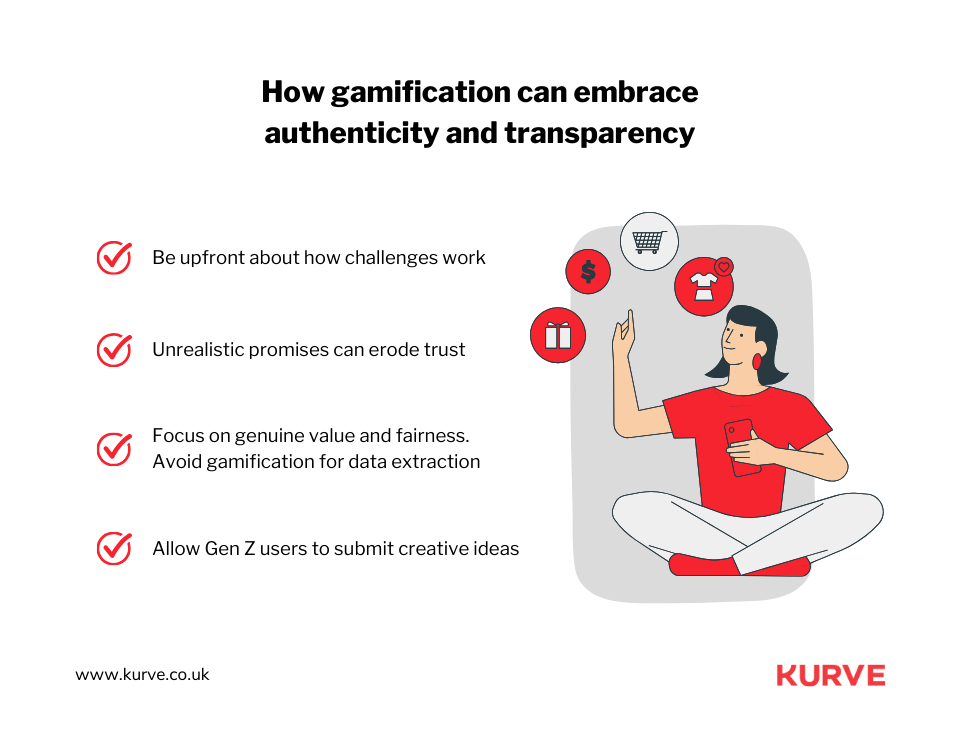
Ease and Clarity
Gen Z has short attention spans and less patience for complex systems. Gamification targeting them must focus on ease of understanding and intuitive design.
Moreover, complicated rules or mechanics create a barrier to entry. If users can't understand how to succeed, they're more likely to abandon the experience.
Here's how to streamline gamification without sacrificing the excitement:
- Start with simple mechanics and layer in more complex elements as users gain mastery.
- Use intuitive icons, progress bars, and notifications to guide users without overwhelming them with text.
- Brief, interactive tutorials woven into the experience offer just-in-time learning.
- Highlighting small wins along the way keeps early engagement high and encourages further exploration of deeper mechanics.
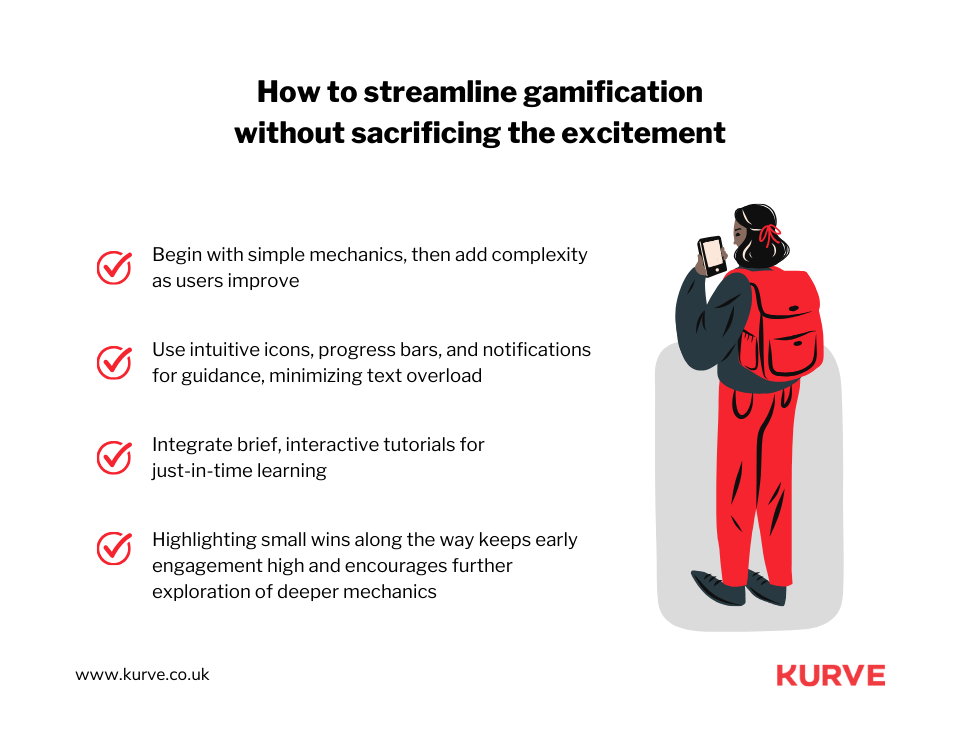
Engagement and Community
Gen Z prioritizes connection and shared experiences. Gamification provides a perfect vehicle to tap into this need by fostering communities centered around common interests or goals.
Gamification elements like leaderboards and contests ignite a spirit of rivalry that sparks engagement. Team-based features encourage users to work together, strengthening bonds and making them feel part of something bigger.
Here are some successful examples:
- Workout apps make shared experiences with features like group challenges, virtual races, and the ability to see others' progress and offer encouragement.
- Gamified learning sites often have forums and team-based challenges, turning studying into a social activity.
- Brands and franchises sometimes create gamified experiences where fans earn rewards, gain status, or engage in trivia battles.
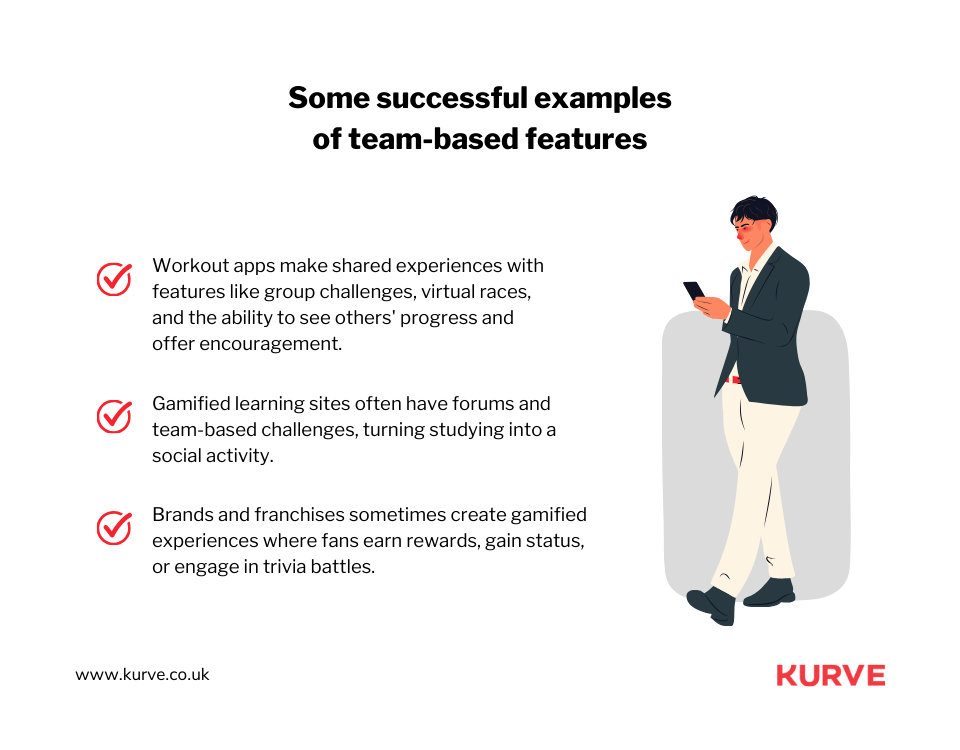
Effective Gamification Examples
Now you understand the basics of gamification. But what are the best ways to implement gamification techniques? Here are some examples.
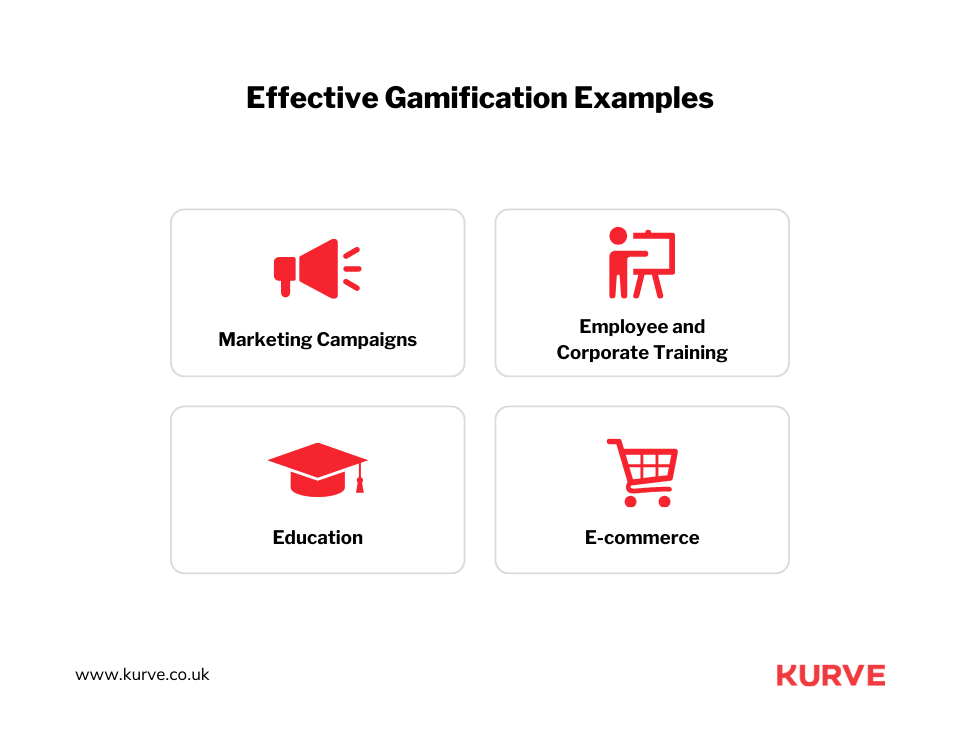
Marketing Campaigns
Sweatcoin is an app that turns your walking steps into a virtual currency. These can be redeemed for goods and services within their marketplace. This presents a clear, tangible incentive for physical activity. Sweatcoin also features leaderboards, challenges, and the ability to donate your Sweatcoins to charities.
It works as walking is something most people can do, lowering the barrier to entry. Sweatcoin focuses on rewarding activity, not punishing inactivity, which aligns with Gen Z values and is key in a behavior change app.

Employee and Corporate Training
Cisco is a digital communications company that invests in keeping its workforce up-to-date on the latest technologies and sales strategies.
They have gamified their social media training program as employees progress through certification levels (e.g., Strategist, Master) and sub-specializations for different job roles. Their corporate training has team challenges that create collaboration, while leaderboards add a layer of competition to drive engagement.
Education
Duolingo is a language learning app with streaks, leveling, rewards, and friendly competition. It's effective for Gen Z as it allows student engagement and competition, a personalized learning path, and social validation.
It gamified the experience of learning a language through scores, which makes it fun and less of a chore.
E-commerce
Gamification has affected how people do e-commerce. An example is a spin-to-win pop-up. Upon website entry, it offers a gamified discount wheel. It gives a sense of playing for potential rewards, encouraging immediate shopping.
Another example is scavenger hunts, where you can hide discount codes or clues around your site for a treasure hunt, encouraging in-depth exploration of your product range.
The Future of Gamification with Kurve
The gamification strategy has massive potential. To deliver results, it must focus on what motivates Gen Z and transform ordinary experiences into engaging and rewarding ones.
Whether you're
- An educator looking to boost student participation
- A marketer seeking to deepen brand loyalty
- A business owner aiming to enhance employee training
gamification has the potential to revolutionize the way you connect.
Get in touch with us to learn how Kurve can turn these gamification concepts into impactful results for your organization.
Don't forget to visit our blog for more insights, case studies, and the latest trends in engagement strategies.
